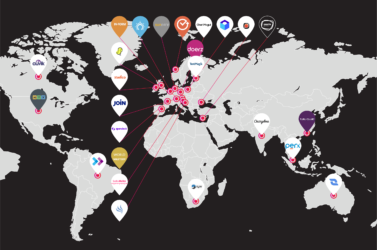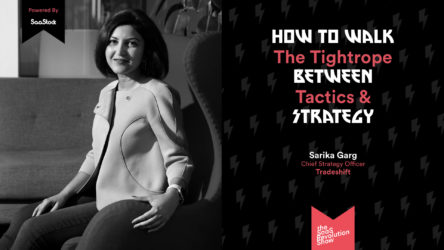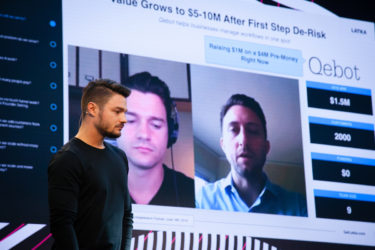Dan Steinman was the latest guest at an AMA session held on the SaaS Revolution Club Slack Community and talked all things Customer Success. Dan is a Customer Success veteran, with particular expertise in (and passion for) growing young, tenable marketing startups into strong, IPO- or acquisition-ready companies. That must be why he’s sat atop the Customer Success team for the successful Customer Success product, Gainsight.
During the AMA he answered questions about Customer Success in the early stages of a company, how CX and CS differ and complement each other and why everyone in the company should be all in on Customer Success.
Below is the session, lightly edited.
At SaaStock you mentioned a number of times that the most important CS metric is Net Retention. I’d like to know more about how to effectively measure this with annual clients, and why it is considered the most important metric.
This is a great question because it’s so important.
Net Retention has become the most important metric in the recurring revenue world because it’s the ultimate measure of the health of your install base. It’s simply the combination of renewal + upsell – churn.
If you have one customer worth £100K and they renew their contract and buy another £10K from you, your net retention (NRR) is 110%. You need NRR greater than 100% to be a viable recurring revenue company.
NRR is also the best measure of your Customer Success team because everything a CSM does should increase the likelihood of renewal and the likelihood of a upsell.
For a B2B SaaS company that’s just getting started (< 10 clients) and has little time to dedicate to CS, what are the ‘quick and easy’ wins you would recommend for getting started with it? Talking pre-metric style stuff here where we can be a little more personal with them, etc.
If you are building a SaaS business or a recurring revenue business, I’d argue that you HAVE to make time to do Customer Success and do it well, even at that stage.
The most valuable thing about Customer Success at that stage might be helping to figure out product/market fit.
You’ll be less worried about renewal and upsell at that point, but you’ll still want someone working closely with your customers and helping the company learn from every one of them.
Should the whole company be ‘in customer success’?
Customer Success Law #1 – It’s a top-down, company-wide commitment.
Customer Success is not “That department over there taking care of customers.” It’s a philosophy that needs to be supported from the CEO (even the board) down to the whole company.
It’s no different than Sales. Everyone has to be all-in to help, or it won’t happen.
In the early stages, and later on too, who should own it? In the later stages, do you allocate multiple heads of customer success? Or heads of areas? For example, someone that ensures customers are happy with the tech team, with the support team, with the sales team, etc.?
Customer Success requires that every department become better at what they do to deliver on the promise of your product. Think about it like you do support. It’s one organization with high-level goals (retention in the case of Customer Success), but you may end up with specialists within that organisation.
You want to create a common and consistent journey for your customers regardless of industry, use case, size, etc.
Customer Success is part of delivering that common experience, in fact, it is the primary owner and driver of it.
Should we assume customers know more about technology in this day and age or less? For example when deciding on how much detail to go into when training someone on your software.
I think our user-base naturally becomes younger over time so probably generally more tech-savvy today than yesterday. However, I’d want to be data-driven and observe which parts of the product are not getting used or that customers are struggling to use and that would be my guide for how to interact with them and what to prioritize.
What’s the difference between customer experience and customer success?
Customer experience (CX) historically has been survey-focused and has tried to make certain parts of the customer experience better. For example, CX might be the team that discovers that customers hate our invoices and starts the initiative to fix that problem.
Customer Success (CS) will typically take a more holistic view of customer health and try to proactively drive value for customers.
Here’s an equation that might help: CS=CO+CX.
CO stands for client outcomes. The overall success of our customers is the combination of the experience they have and our ability to deliver the outcomes they desire.
When beginning the Customer Success Team creation, is it better to separate CX from CS or is it viable to have the two incorporated?
I would separate them initially with an expectation they will come together. CX is one of the inputs to customer health, and that’s what drives customer success.
Think of it from the perspective of trying to put a health score on every customer. What they say on surveys is part of that health score but certainly not all of it.
You’d probably want to include things like how often they call Support, do they pay their bills on time, do they use your Community, do they open your Marketing emails, do they buy more from you, etc. All of those are part of determining whether a customer is healthy or not.
As you have worked in both the US and Europe, what are the biggest differences in Customer Success that you have noticed between the two? Anything that you think has worked best in either region?
The biggest difference is just maturity. The motions and goals are the same – drive product adoption/value which will deliver higher retention rates and better advocacy.
Because it started in SaaS and the most mature SaaS companies are in the US, Customer Success is more mature there, too.
Maturity is marked by refined processes, use of technology, more experienced leadership, less questioning of the need, etc.
Should CSMs have a quota or not?
Opinions on this question vary. Mine is that most CSMs have chosen to NOT be sales people and don’t want to be treated like one. Quota makes them feel like a sales person.
The best CSMs are trusted advisors, and it’s much harder to be a trusted advisor if you are also trying to sell.
What can we expect from Pulse London in November that’s different to last year?
Dan Steinman singing on stage.
Beyond that we will have more people this year – 1000 expected. This means more breakout sessions and a wider variety of topics.There will be more advanced topics for those who came last year. But also a lot of foundational topics for those who are new to CSM or coming to Pulse for the first time. And we’ll do some of the favorite sessions again – CEO panel, VC panel, technology keynote.
We are in the early stage, so working toward product/market fit. We are putting together a plan and a process for how we put a bigger focus on customer success (particularly to enable us to convert trial users to paid users). Any tools or tips for helping us (small team <10) achieve that?
Many of the motions of trying to convert trials to paid customers are Customer Success motions.
Monitoring how, or if, they are using the product. Using data (I hope) to determine when someone is ready to convert or when someone is not doing anything.
In many ways, a subscription is a trial, so you could argue that all our customers are doing a trial and we have to earn their business every year or every month.
My CEO at Marketo used to say “I want every customer on a one-year contract because I want them to tell me every single year whether we’ve done what is necessary to earn their business for another year.”
Yep, we are viewing customer success as an ongoing process, but just focusing on any development work (including metric gathering) being prioritised to help with trial monitoring and evaluation.
That’s kind of the same goal as a trial – earn the customer’s business.
Customer Success seems to evolve year on year, is there something new that you have come across or learned this year that you have adopted for the team or yourself? What are the latest trends in CS?
One trend I’ve seen over the past few years is a move away from relationship-thinking when it comes to Customer Success, and more towards a process and metrics orientation.
It’s kind of the same process Sales has gone through that created (or fulfilled) the need for CRM systems.
Treat it as science and process, not as some dark art.
Another realization (maybe a trend) is that the core Customer Success problem is not about analytics, it’s about the process. More Excel spreadsheets do not solve the problem. The real problem being operationalizing the customer lifecycle and applying best practices at each stage and actively managing the outcomes the customer desires.
Can you share an example where customer success has greatly increased recurring revenue?
The easiest example is in Chapter 1 of our book. A little company called Salesforce. They had a churn rate of 8% per month when Benioff decided he needed a team focused on adoption and retention. Today, instead of a 96% annual churn rate, they have a $10B install base that naturally grows 25-30% per year. I’d call that significant. And the pioneers at Salesforce would tell you those results are directly related to their maniacal focus on Customer Success.
Now, THAT’s an example! Where can people get your book?
You can get a hard copy on Amazon. Hard copies are running low (we’ll do a second printing soon) so get them while you can, or get it on Kindle.
How do you factor “Customer Maturity” (either a formal index or just informal notion) into your Playbook… does it influence how you interact with customers?
Really good question. I’d say it a slightly different way. Your maturity determines your interaction with customers. The more mature you are in Customer Success, the more refined your process and interactions are. More of the interactions will be automated because you know where that works and how to make it work.
And the interactions with some clients that you know will be strategic, are more likely to be delivered to the right customers and more likely to be one-on-one.
I think Playbooks become best practices guides for CSMs in their interactions, but senior CSMs will have more discretion to adjust to the maturity and knowledge of the customer.
We always wrap up these AMAs with one question, but I have 2 for you. First off, if you were to come back to earth as an animal, what animal would it be and why? And secondly, what can we expect you to sing on stage at Pulse?
Maybe a tiger because I’d like to play golf as well as Tiger Woods. I am not answering the second question because it might spoil it. But here’s a clue – the theme is classic European rock & roll. That narrows it down to about 25,000 songs.
Please say it’s Rolling Stones and you are Mick Jagger.
We hold regular AMA sessions and you can be part of the conversation next time. Join the SaaS Revolution Club Slack Community.




